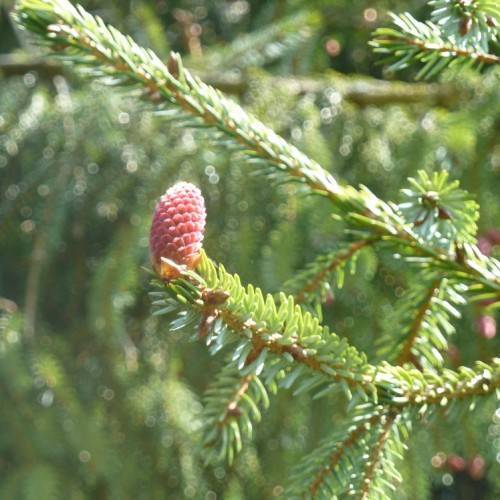
luiang spruce
Picea likiangensis
Cycle:
Perennial
Watering:
Average
Hardiness Zone:
4 - 7
Flowers:
Flowers
Sun:
Full sun,part shade
Cones:
Yes
Leaf:
Yes
Growth Rate:
Low
Maintenance:
Low
Drought Tolerant:
Yes
Care Level:
Medium
watering
The Luiang Spruce should be watered using regular watering about 1-1.5 inches of water per week, either from rainfall or irrigation. The best time to water is early in the morning or late in the evening to reduce the possibility of water evaporation. For example, in the early morning the air is cooler, humid and moist, and in the evening the temperatures begin to cool down. Avoid mid-day or afternoon watering to prevent root rot and fungus from developing. Water the soil deeply, saturating it around the tree, but not flooding it. Also take into account the amount of rainfall that the tree has received and reduce the watering accordingly. Too much moisture can also damage the roots of the tree.
sunlight
The Liang Spruce (Picea likiangensis) can be found in mountainous regions of China, Myanmar and India. It thrives in bright, indirect light, usually getting 6-8 hours of full, bright sun daily. Partial shade is also acceptable for this species, but the amount of sun it receives should remain fairly consistent throughout the growing season. In colder climates or when grown indoors, the Liang Spruce may require supplemental light sources to get enough sun. In the summer months, it will benefit from morning sun and afternoon shade, while in winter months more full sun is preferred.
pruning
Liang Spruce (Picea likiangensis) are hardy, slow-growing conifers that require annual pruning for optimal health. Pruning should be done during the summer months, after the new growth of the season has hardened off. The amount of pruning depends on the size and age of the tree. Older, larger trees may require light thinning or removal of crossed or dead branches. Young and smaller Liang Spruce trees may require more aggressive pruning to encourage a strong central leader and open-up the canopy to allow for better air and light circulation. It's important to remove dead, diseased, or weak branches as well as any low-hanging limbs that may impede movement or pose a safety hazard. Selective pruning can also be used to shape the tree or reduce wind resistance. To ensure the health of the tree, strive to prune only 1-third of the foliage each year and avoid excessive removal of foliage in any single season. If you're not sure how to properly prune a Liang Spruce, consult a certified arborist.
